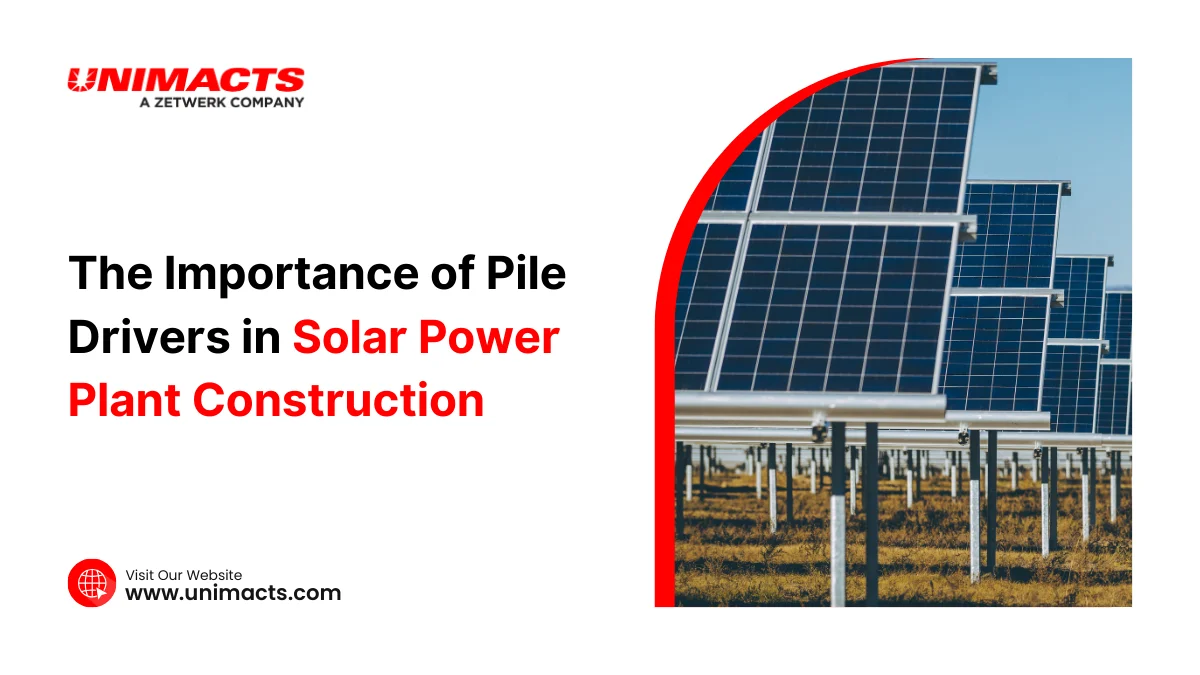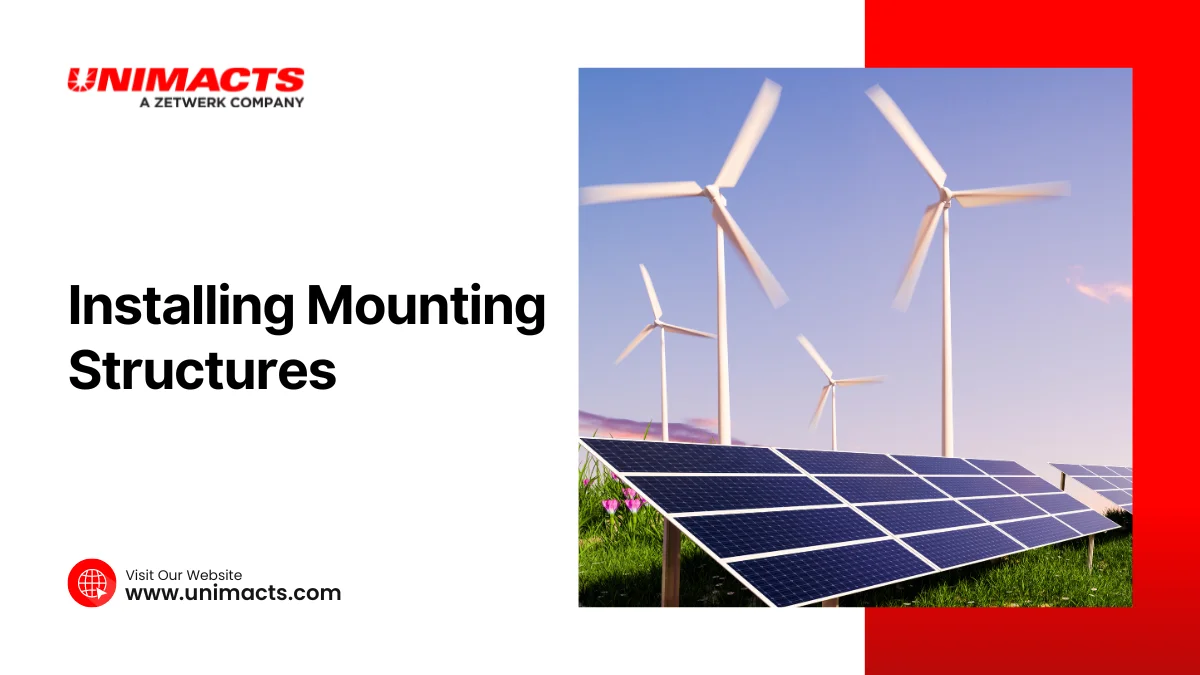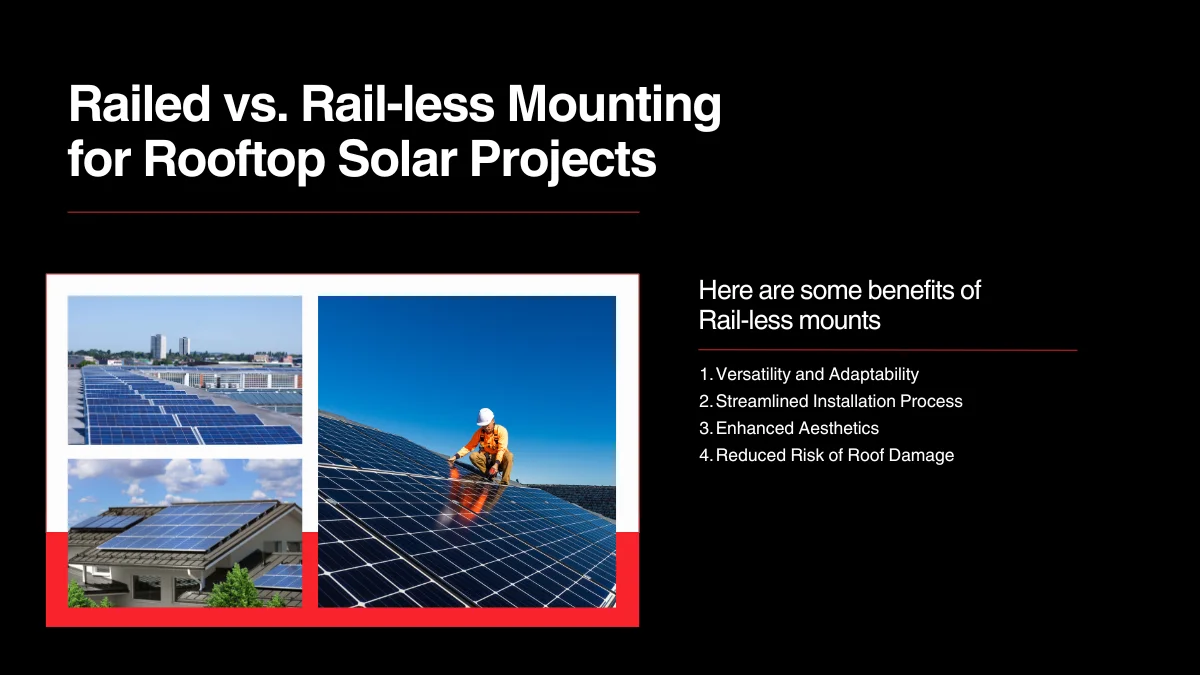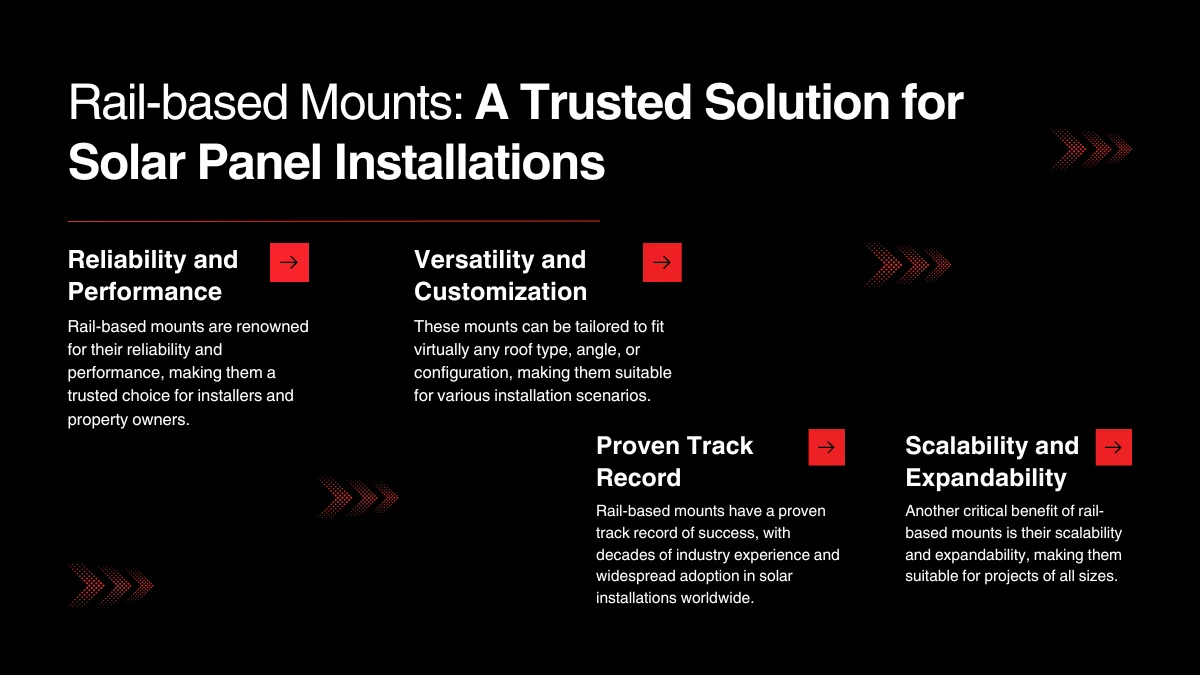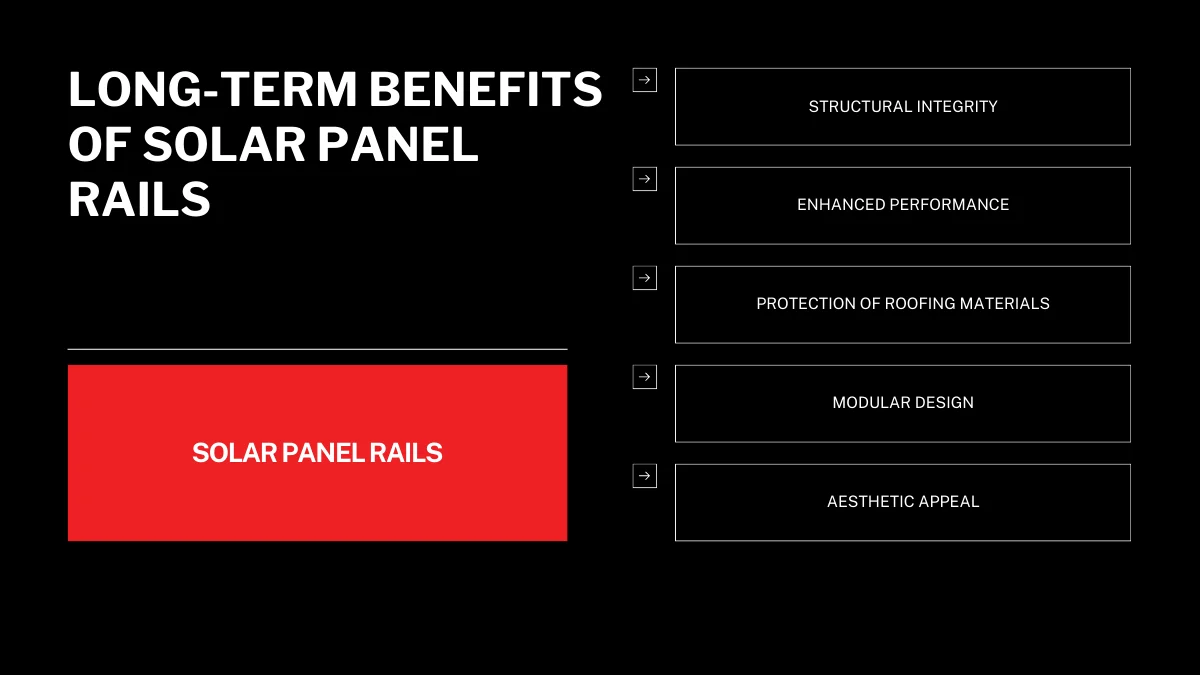Solar energy has emerged as an essential factor in the shift to renewable energy sources. The effectiveness of a solar panel system is heavily reliant on its mounting infrastructure. Their mounting mechanisms influence solar installations’ stability, lifespan, and overall performance.
This article explores solar panel mounting systems, the types of solar PV modules, and essential factors when selecting the appropriate infrastructure.
The Value of Solar Panel Mounting Systems
- • Optimal Sun Exposure: The fundamental function of a solar panel mounting system is to orient the panels for maximum sunlight exposure. Angle and direction are essential elements that directly affect energy collection. A well-designed mounting mechanism guarantees panels receive the most sunshine throughout the day.
- • Stability and Durability: Solar panels are exposed to various weather conditions, including wind, rain, and snow. The mounting mechanism must be stable and durable to withstand these circumstances. A robust infrastructure protects the panels from harm and increases their longevity.
- • Aesthetics and Space Utilisation: The aesthetic integration of solar panels into the surrounding environment is critical, particularly for residential applications. Mounting solutions should be developed to fit the architecture while maximizing available space.
Understanding Solar Modules
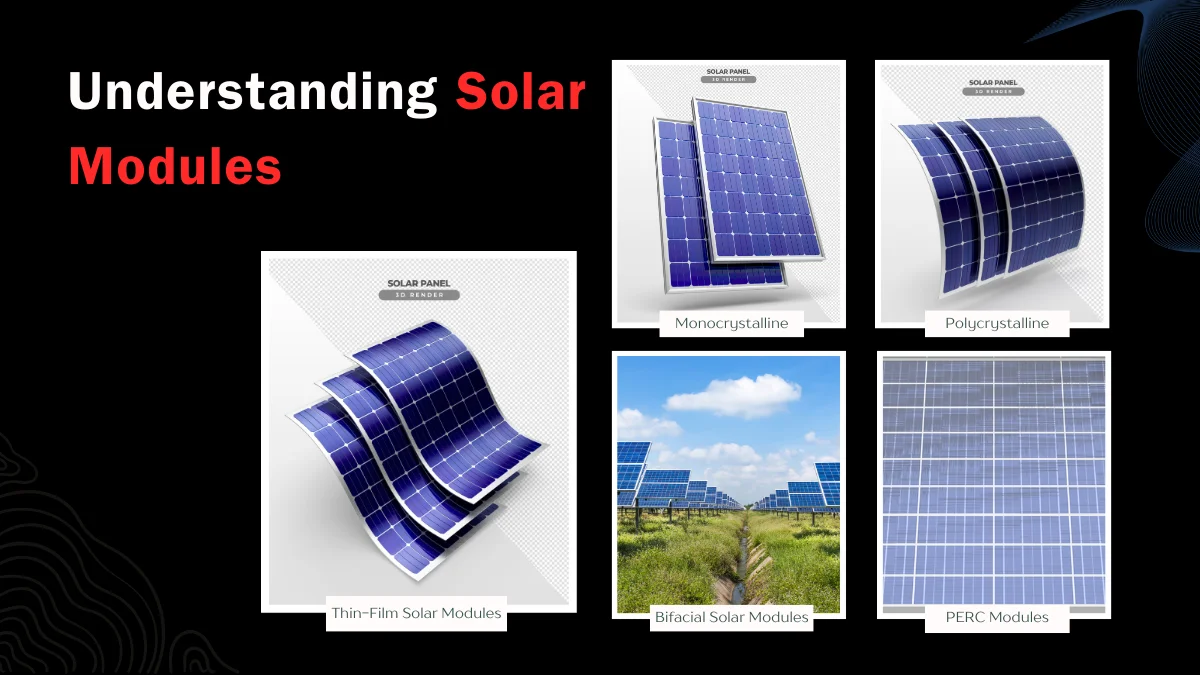
A solar module, often called a solar panel, is a single photovoltaic panel comprising many linked solar cells. Solar cells absorb sunlight to make power. Power is supplied to buildings via an array of modules.
Solar modules generally consist of 6×10 solar cells. Solar cells’ efficiency and wattage production vary according to their kind and quality. A solar module’s energy production ranges from 100 to 365 Watts of DC power. The higher the wattage output, the more energy produced per solar panel. A solar array of modules made up of higher-energy-producing solar modules will thus create more power in less area than an array of lower-producing modules. However, there is a larger cost for generating more modules.
When you decide to acquire a solar power system, you will see various types of solar PV modules, and for beginners in the industry, it might be challenging to comprehend the differences between these technologies.
So, let’s get a quick explanation of all the types of solar PV modules below:
1. Monocrystalline Solar Modules
In general, monocrystalline silicon solar PV is the most efficient technology in terms of watts production per panel size. However, this efficiency may be costly. Polycrystalline silicon is the most significant value in solar PV technology, with efficiency levels comparable to monocrystalline panels while costing half as much in some circumstances.
Monocrystalline solar cells are manufactured by developing a single crystal. Because these crystals are typically oval, monocrystalline panels are cut into the characteristic patterns that give them their recognizable appearance: the sliced silicon cells reveal the missing corners in the grid-like structure. The crystal structure of a monocrystalline is even, providing a consistent blue color and no grain markings, giving it the highest purity.
Advantages:
- • They have the highest level of efficiency, with 15-20%.
- • Due to their excellent efficiency, they take up less space than other varieties.
- • Manufacturers claim that this type of solar cell lasts the longest, with most offering a 25-year warranty.
- They function better in low amounts of sunlight, making them suitable for overcast conditions.
Applications:
- • These panels are widely used in solar roofing in both urban and rural locations.
- • These panels are highly suggested for larger-scale solar installations in huge, uncultivated areas.
- • Smaller panels with 5 to 25 watts can charge phones, cameras, and computers.
- • Panels rated between 40 and 130 watts may power higher-wattage appliances such as refrigerators and microwaves.
These panels are beneficial for lighting gardens. They may be arranged in arrays to power rural dwellings, and their freestanding nature makes them perfect for street illumination.
2. Polycrystalline Solar Modules
Polycrystalline solar cells are created by pouring molten silicon into a cast. However, because of this building approach, the crystal structure will develop poorly, resulting in borders where the crystal formation fails. This gives the polycrystalline silicon a gritty look since the gemstone-like pattern accentuates the crystal borders.
Because of these imperfections in the crystal, polycrystalline silicon is less efficient than monocrystalline. However, this production technique utilizes less energy and resources, resulting in a substantial cost advantage over monocrystalline silicon. (Polycrystalline and multi crystalline are often synonyms, but multi crystalline usually refers to silicon with crystallites larger than 1 mm.)
Advantages:
- • Lower cost compared to monocrystalline modules
- • Suitable for large-scale installations where space is not a significant constraint
- • Reliable performance in various climates
Applications:
- • Utility-scale solar farms
- • Ground-mounted solar installations
- • Large commercial rooftop systems
3. Thin-Film Solar Modules
Thin-film technology, despite its smaller market share, offers unique advantages. It is an excellent alternative for projects with minimal power requirements but a need for mobility and lightweight design. With a maximum efficiency of 20.3%, thin-film technologies, with amorphous silicon accounting for 12.5%, demonstrate their potential in specific applications.
Thin-film solar panels are made from several materials, the most common being amorphous silicon (a-Si), copper indium gallium selenide (CIS/CIGS), and cadmium telluride (CdTe). Thin-film cells, as a relatively new technology, have the potential to be less costly. Thin-film technology has the potential to be a game changer in the consumer sector, where pricing considerations make it more competitive. This is one of the most promising types of solar PV modules.
Advantages:
- • Lower manufacturing costs compared to crystalline silicon modules
- • Flexibility in module design and installation
- • Tolerance to high temperatures and partial shading
Applications:
- • Utility-scale solar farms
- • Large commercial and industrial rooftop systems
- • Ground-mounted solar installations in hot climates
4. Bifacial Solar Modules
Bifacial modules, a cutting-edge innovation, have the potential to revolutionize solar electricity generation. These modules harness solar energy from both sides of a panel, offering a significant increase in power production. When mounted on a highly reflecting surface, such as a white TPO roof or light-colored stones, some manufacturers claim that the extra power generated from the back can boost production by up to 30%. This exciting potential could open up new possibilities for solar energy applications.
Unimact offers one such product: Nova (540-555W), a cutting-edge P-Type MonoPERC Bifacial solar module that delivers 540-555W of power.
Key Features:
- Power Output: 555W
- Module Efficiency: 21.5%
- Power Warranty: 30 years
- Temperature Coefficient: -0.334%/°C
- Bifaciality Value: 70±10%
Advantages:
- • Bifacial solar modules have several benefits over conventional solar panels.
- • With power generation from both sides, bifacial modules significantly enhance overall energy output, a key advantage over conventional panels. They’re frequently more durable since both sides are UV resistant, and frameless bifacial modules lessen the risk of potential-induced deterioration (PID).
One significant advantage of bifacial modules is their potential to reduce balance-of-system (BOS) expenses, as they generate more electricity in a smaller array footprint.
Applications:
- • Solar farms
- • Ground-mounted solar installations
- • Commercial and industrial rooftop systems
- • Off-grid systems
5. PERC (Passivated Emitter and Rear Cell) Modules
PERC solar modules are architecturally identical to other silicon panels on the market, significantly benefiting producers.
Despite the higher expenses of manufacturing passivation and rear contact capping layers, panel producers may reuse current production equipment with minimum retooling.
This brings PERC manufacturing costs in line with traditional silicon cell manufacture. Although PERC panels are slightly more expensive, the enhanced efficiency benefits outweigh these expenses, resulting in significant lifetime electricity bill savings and carbon offsets for the end user. As the technology matures due to economies of scale and R&D, PERC cells are projected to benefit from even more significant efficiency increases and cost reductions in the future.
Advantages:
- • More efficient than standard silicon solar panels.
- • It works better in low light and high heat than ordinary solar cells.
- • They are cheaper than N-type solar panels.
Applications:
- • Residential rooftop systems
- • Commercial and industrial rooftop systems
- • Utility-scale solar farms
Critical Considerations for Choosing Solar Modules for Large Installations
When selecting solar modules for your solar installation project, several key factors are crucial in determining the most suitable option. Here are the essential considerations to keep in mind, along with explanations of why each factor is necessary:

- › Efficiency
Efficiency is critical when choosing solar modules as it instantly affects the amount of electricity generated from sunlight. Higher-efficiency modules can produce more power in limited space, making them ideal for installations where space is constrained. By maximizing the power output per square meter, you can optimize the energy generation potential of your solar system, reducing the overall footprint and potentially saving on installation costs.
The reflectance efficiency of a solar panel controls how much sunlight it absorbs. This is crucial for determining power generation efficiency since panels with less reflection create more energy. These panels employ a variety of approaches to decrease reflection, including anti-reflective coatings on the glass, which aid in the absorption of more light.
Thermodynamic efficiency is the maximum possible degree of output. It calculates the optimal moment photons interact with solar cells to create the most electricity. The most excellent technique to boost efficiency is to build tandem solar cells and divide the sun spectrum into smaller sections, increasing the efficiency limit for each sector.
Unimact brings one such product that genuinely defines efficiency. The N-Type TOPCon Bifacial Dual Glass 575-590W solar module offers high efficiency at 22.65% for improved performance in different climates.
- › Cost
Cost is a significant consideration for any solar project. While high-efficiency modules may come at a premium, balancing the initial investment with long-term energy savings is essential to ensure the best return on investment. Evaluating the total cost of ownership, including installation, maintenance, and energy savings, can help you make a decision that matches your budget and financial goals.
- › Durability and Lifespan
The durability and lifespan of solar modules are crucial for the longevity of your solar system. Modules with a longer lifespan and robust construction can withstand difficult weather conditions and generate electricity efficiently over many years. Investing in durable modules can minimize the risk of premature failure, reduce maintenance costs, and ensure a stable energy supply for your project. The Orion (575-590W) is an N-Type TOPCon Bifacial Dual Glass solar module by Unimacts with an impressive 30-year linear Power Warranty.
- › Temperature Coefficient
The temperature coefficient of solar modules determines how their efficiency is affected by temperature changes. Modules with a lower temperature coefficient perform better in hot climates, ensuring consistent energy production even in high temperatures. Choosing modules with a favorable temperature coefficient can help maintain optimal performance and maximize energy yields in regions with extreme heat or prolonged periods of high temperatures.
- › Space Availability
The available space for solar installation will influence the choice of solar modules. Depending on the size of the installation area, you may opt for high-efficiency modules to maximize power output or consider other module types that suit the available space. When space is limited, such as rooftop installations or urban settings, prioritizing efficiency can help you generate more power within the given area.
- › Environmental Impact
Considering the environmental impact of solar modules is essential for sustainable energy practices. Choosing modules with minimal environmental impact throughout their lifecycle, from manufacturing to disposal, contributes to a greener energy solution. Factors like eco-friendly materials, energy-efficient manufacturing processes, and module recyclability can help lower the carbon footprint and promote sustainable development.
By carefully evaluating these fundamental considerations, you can select the most suitable solar modules for your project, ensuring optimal performance, cost-effectiveness, and environmental sustainability.
Innovations in Solar Module Technology for Large Installations
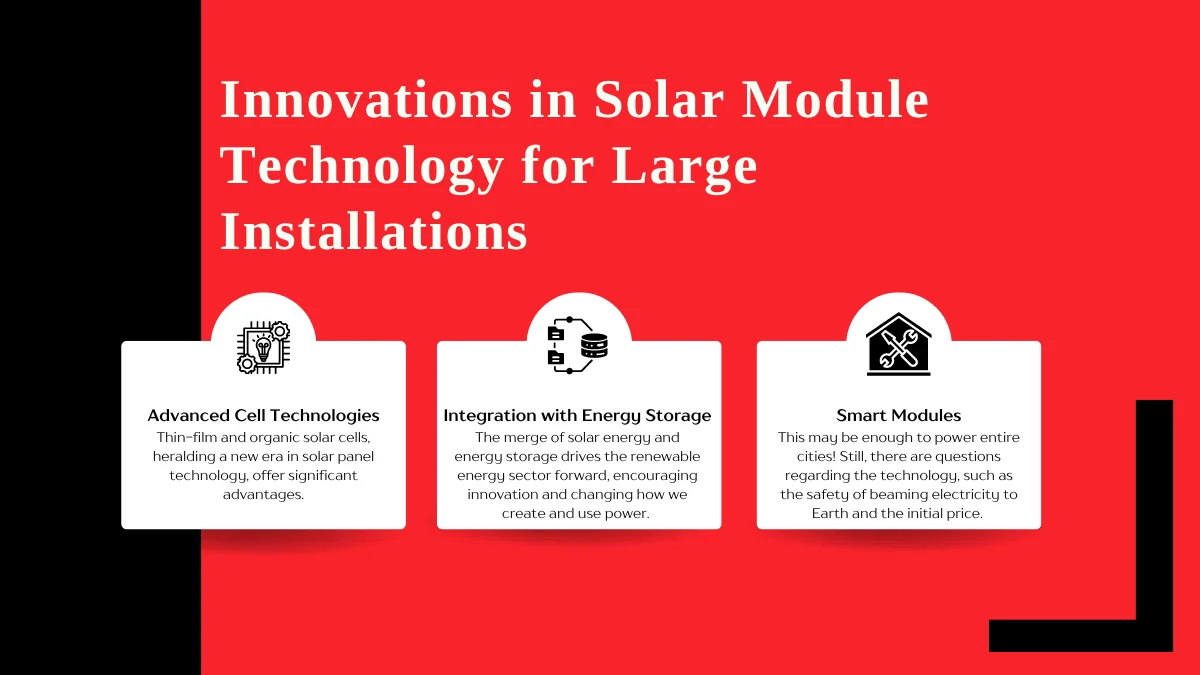
- • Advanced Cell Technologies
Thin-film and organic solar cells, heralding a new era in solar panel technology, offer significant advantages. With its flexibility and lightweight design, thin-film technology enables solar panels to be integrated into various surfaces, from buildings to clothes. On the other hand, organic solar cells, crafted from carbon-based materials, present a sustainable and cost-effective solution for solar energy generation.
- • Integration with Energy Storage
The merge of solar energy and energy storage drives the renewable energy sector forward, encouraging innovation and changing how we create and use power.
This integration drives the shift to a more sustainable and resilient energy future by improving grid flexibility, optimizing self-consumption, deploying decentralized energy systems, and developing novel applications.
As technology advances, we may anticipate even more exciting developments in this arena, pushing the limits of solar and energy storage integration. Adopting these advances will result in a cleaner, more sustainable energy landscape and offer economic possibilities and a brighter future for future generations. Allow us to harness the force of invention.
- • Smart Modules
Space is excellent for collecting solar energy since no clouds, atmosphere, or nightfall exist. This allows the solar panels complete, unrestricted access to the sun’s beams. If you employ these satellite solar panels, you can develop as much solar energy as nuclear power plants (gigawatts, not megawatts).
This may be enough to power entire cities! Still, there are questions regarding the technology, such as the safety of beaming electricity to Earth and the initial price. However, unlike many solar innovations, solar satellite technology has existed in some form since the 1970s.
Smart modules, a cutting-edge advancement in solar module technology, are revolutionizing energy production and administration. By harnessing the power of artificial intelligence and the Internet of Things, these modules enhance the efficiency of solar power systems.
AI algorithms can predict energy production and consumption trends, enabling more efficient energy management and grid integration. Smart modules, by monitoring and regulating energy output in real-time, maximize energy generation and consumption.
Top Solar Panel Modules in the USA
- • Unimacts:
Unimacts is a comprehensive supplier of collar modules for large installations. It offers innovative, high-quality energy solutions for various industries and is known for its commitment to delivering reliable products and exceptional customer service.
- • SunPower
SunPower, located in San Jose, California, is a solar panel manufacturer with over 35 years of experience. They have been pioneers in the solar business, manufacturing solar panels efficiently. Their product line includes both the Maxeon and the Performance series.
SunPower’s Maxeon line is known for its high efficiency and durability. Their Performance line blends conventional cells with SunPower production, resulting in a sturdy design suitable for various applications. SunPower’s solar panels created in the United States are suitable for residential, commercial, and utility-scale applications, putting them among the top US-made solar panels.
- • Q CELLS
Q CELLS, a subsidiary of the Hanwha Group, is a worldwide solar firm headquartered in the United States. Owing to its high-performance solar panels, it has had a tremendous influence on the US solar business.
Q CELLS’ product range, which includes the Q.PEAK DUO series, is recognized for its performance, dependability, and innovation. These solar panels combine high-efficiency monocrystalline technology with cutting-edge cell separation and creative wiring. They offer solar solutions to home, business, and industrial customers.
- • SolarTech Universal
SolarTech Universal is a high-tech solar panel company in Riviera Beach, Florida. The firm takes pleasure in employing new manufacturing processes and materials to produce high-quality solar panels.
SolarTech Universal’s SmartWire Technology enhances panel efficiency by improving shade response and light gathering. In addition, the business uses a unique triple-redundant sealing technique to safeguard the panels from environmental damage and maintain their longevity.
Conclusion
Choosing among the best types of solar PV modules is an important choice that affects the success of a solar installation. The choice of infrastructure is a multifaceted issue that includes optimizing solar exposure, maintaining stability, and adapting to numerous site-specific constraints. Whether for residential rooftops, commercial installations, or large ground-mounted arrays, the mounting solution should be appropriate for the solar project’s individual demands, budget, and long-term goals. As solar technology advances, the need for solid and efficient mounting systems grows to realize the full power of solar energy for a sustainable future.
Selecting the right type also guarantees that your money is adequately secured. This means you may be confident that your energy output is optimal. It can help you take full advantage of the numerous benefits that solar electricity provides.
Invest in a high-quality solar panel mounting system, and if you need any professional assistance, Unimacts is the global industry leader known for the highest quality products for large-scale solar installation projects.

